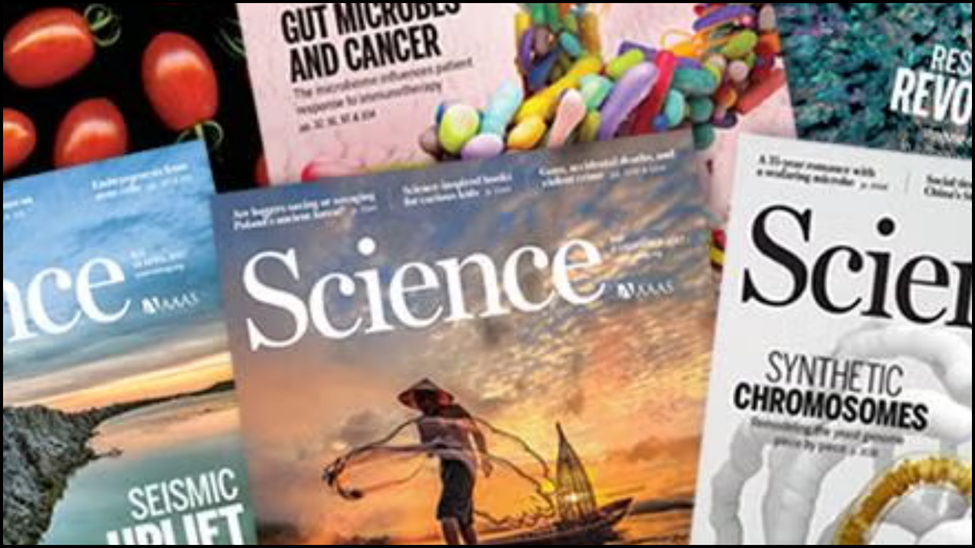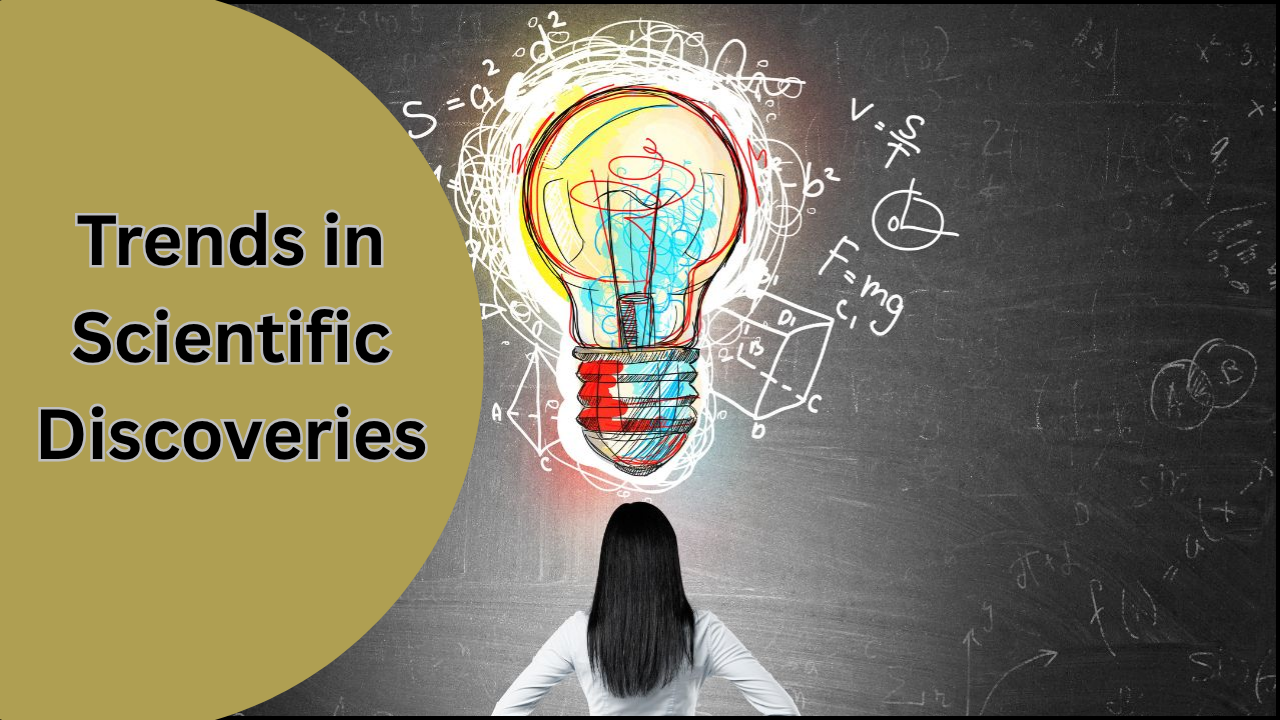In the dynamic world of scientific discovery, staying abreast of the latest trends in scientific discoveries is not merely a professional courtesy but an absolute imperative. The pace of innovation is accelerating, driven by unprecedented computational power, novel experimental techniques, and a growing emphasis on interdisciplinary collaboration. For researchers, practitioners, and enthusiasts alike, understanding current scientific trends allows for informed decision-making, the identification of impactful research questions, and the anticipation of future breakthroughs. This proactive engagement ensures one's work remains at the cutting edge and contributes meaningfully to humanity's expanding knowledge base.

Navigating Key Scientific Trends
The landscape of scientific trends is vast and ever-shifting. To effectively navigate it, one must identify the dominant currents shaping the scientific discourse. In 2025, several overarching scientific trends continue to exert significant influence. Artificial Intelligence (AI) and machine learning remain foundational, not just as research topics themselves, but as tools revolutionizing nearly every scientific discipline, from drug discovery and materials science to climate modeling and personalized medicine. The ethical implications of AI are also a major area of active research.

Another prominent set of scientific trends revolves around sustainability and climate action. Research into renewable energy sources, advanced battery technologies (including solid-state batteries), carbon capture, and eco-friendly materials is paramount. Biotechnology, particularly synthetic biology and personalized medicine, represents a powerful force, with advancements in gene editing (CRISPR), cell therapies, and multi-omics research driving transformative changes in healthcare and agriculture. We're also seeing significant scientific trends in quantum computing, aiming to solve problems intractable for classical computers, and advancements in cybersecurity and data privacy, which are crucial as science becomes increasingly data-driven.
Subscribing to Science Journals: Your Gateway to Discovery
One of the most reliable and direct ways to keep pace with the latest trends in scientific discoveries is by subscribing to leading science journals. These peer-reviewed publications are the primary conduits for disseminating new research findings and critical analyses. Journals like Science and Nature are quintessential, publishing groundbreaking research across all scientific fields and often setting the agenda for future scientific trends. They offer a blend of original research, insightful news, and thoughtful commentary.
Beyond these broad-scope journals, specialized publications cater to specific disciplines. For life sciences, Cell, The Lancet, and New England Journal of Medicine are indispensable. For physics and engineering, publications from IEEE and APS are critical. Many journals offer various subscription options, including digital access, and provide personalized email alerts for new issues or articles matching specific keywords. By strategically choosing subscriptions, researchers can curate a personalized flow of information, ensuring they are consistently exposed to the scientific trends most relevant to their work. This is a fundamental step in staying informed about scientific trends.

Top Scientific Trends in 2025
As of mid-2025, several scientific trends are particularly prominent and are expected to shape the research landscape for the foreseeable future. In biotechnology, the integration of AI with “omics” data (genomics, proteomics, metabolomics) is accelerating personalized medicine and drug discovery, enabling more targeted therapies and a deeper understanding of diseases. Synthetic biology continues to advance, allowing scientists to engineer biological systems for applications ranging from sustainable biofuels and biodegradable plastics to novel therapeutic production. These are major scientific trends.
In materials science, the development of new materials for energy efficiency, such as advanced solid-state batteries for EVs and high-performance semiconductors, is a key focus. Environmental sciences are grappling with solutions for climate change mitigation, including next-generation carbon capture technologies and resilient agricultural practices. The ethical implications of AI and genetic engineering are also critical scientific trends, prompting significant research into responsible innovation and governance. Furthermore, the commercialization of space, extending beyond just launch to in-orbit manufacturing and resource utilization, is also emerging as a significant scientific trend. These are some of the most impactful scientific trends for the current year.

Following Research Trends: Leveraging Modern Tools
Merely subscribing to journals isn't enough; actively following research trends requires leveraging modern tools and strategies. AI-powered research discovery platforms have become invaluable. Tools like Semantic Scholar use AI to analyze citation networks and identify “influential papers” and emerging research clusters, helping users spot research trends that might not be immediately obvious. ResearchRabbit builds dynamic visual maps of research connections, making it easier to see how ideas evolve and identify interdisciplinary research trends. Elicit functions as an AI research assistant, synthesizing insights from thousands of papers to answer specific questions about research trends.
Beyond these platforms, attending virtual conferences and webinars provides early access to preliminary findings and allows for direct engagement with researchers shaping new research trends. Participating in online scientific communities on platforms like ResearchGate or academic Twitter can offer real-time insights and discussions about breaking research trends. Review articles also play a crucial role in synthesizing recent advances and forecasting future research trends. By employing these diverse methods, researchers can gain a comprehensive understanding of evolving research trends and position themselves at the forefront of their fields.
Science Magazine: A Beacon of Scientific Information
Science Magazine, published by the American Association for the Advancement of Science (AAAS), stands as one of the world's most prestigious and widely read general science journals. It is an essential resource for anyone wishing to keep up with the latest trends in scientific discoveries. Its weekly issues feature groundbreaking original research articles, insightful news pieces covering major scientific events and policy, and engaging perspectives that offer context and analysis on new findings.

Subscribers to Science Magazine gain access to a broad spectrum of disciplines, from astrophysics and biology to social sciences and engineering, making it an excellent single source for understanding broad scientific trends. Its “News from Science” section provides daily updates on global scientific developments, ensuring readers are informed between weekly issues. The magazine also publishes “Science Translational Medicine” and “Science Robotics,” among other specialized journals, further delving into specific scientific trends. Its commitment to high-impact research and accessible reporting makes it a vital tool for researchers and the public alike to comprehend the most significant scientific trends.
US Research: Driving Global Scientific Advancements
The United States remains a global powerhouse in scientific research, significantly influencing scientific trends worldwide. Major funding bodies like the National Institutes of Health (NIH) drive biomedical and health research, sponsoring breakthroughs in areas like personalized medicine, gene therapy, and neurodegenerative diseases. The National Science Foundation (NSF) supports fundamental research across all non-medical fields of science and engineering, fostering scientific trends in AI, quantum computing, and climate science. The Department of Energy (DOE) leads research in clean energy technologies, material science, and computational science, contributing heavily to energy-related scientific trends.
Leading US research institutions such as MIT, Stanford, Harvard, and Caltech are at the forefront of these advancements, often through interdisciplinary initiatives and collaborations. Their extensive research outputs, often published in top-tier journals, define many emerging scientific trends. Understanding the funding priorities and research outcomes of these US entities provides crucial insight into the direction of global scientific trends. The sheer volume and diversity of US-funded research mean that to truly grasp the latest trends in scientific discoveries, one must pay close attention to the breakthroughs emanating from its vibrant scientific ecosystem.







